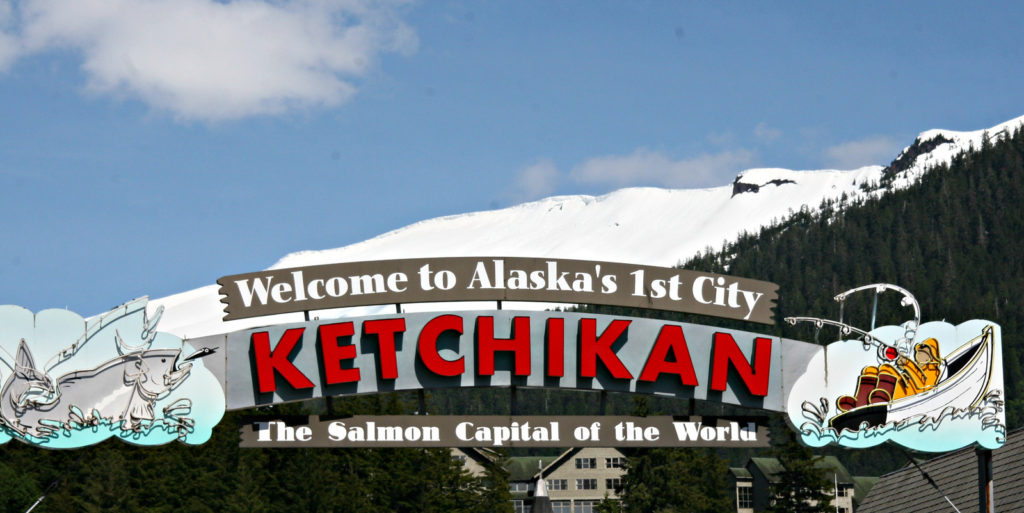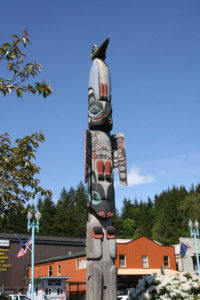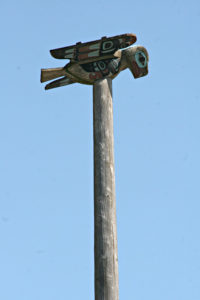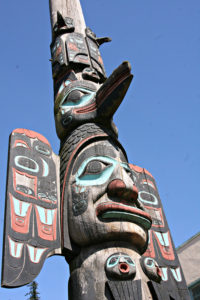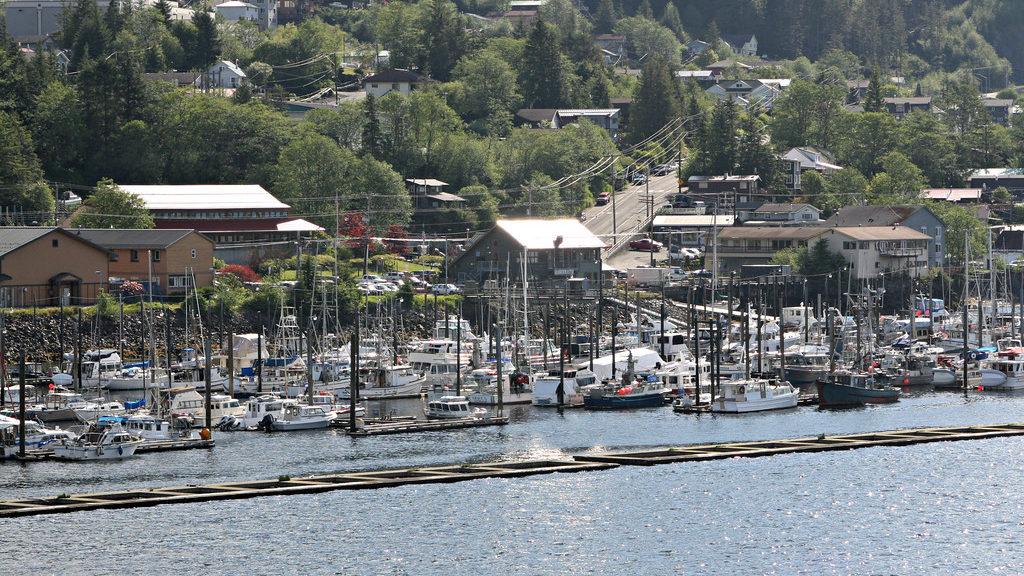
Ketchikan
Ketchikan, our next port of call, is located on an island. Ketchikan is known for salmon, totem poles and its proximity to Misty Fjords National Monument. The average rainfall is 162 inches per year – residents call it “liquid sunshine.”
When we first visited Alaska in 2006, we took a shore excursion to Misty Fjords. We traveled by boat and then took a float plane back to the harbor where we would return to our ship. We saw some beautiful scenery from the ship – but true to its name, it was misty and foggy during our return trip on the float plane. It was a nerve-racking flight as we flew just above mountains, sometimes wondering if we would actually clear them. We were very happy when we were safely back on the ground.
During the ship portion of the shore excursion, we saw eagles on buoys as we entered the area. Misty Fjords has cliffs as tall as 3,000 feet, some with beautiful waterfalls. The cliffs were carved out of the rock as glaciers receded from this area. We also saw New Eddystone Rock, a 237-foot pillar of basalt. It was part of a volcanic vent where magna rose to the surface of the earth. As the magna cooled, the column was left.
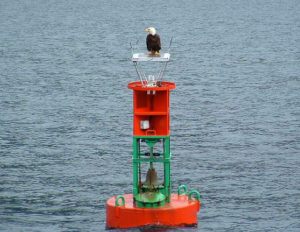
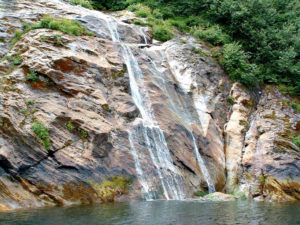
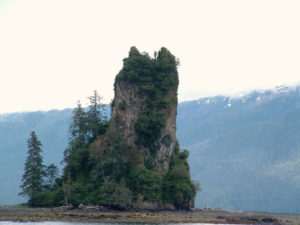

While the scenery was beautiful, I personally would not repeat this shore excursion because of the likelihood of having to make the flight back in rainy/misty weather. Through the years, probably thousands of people – like us – have participated in this excursion safely. But there have been float plane crashes – 9 were killed in a 2015 crash and 7 survived a 2017 crash. And an update…there was a midair collision of two small planes, one returning from Misty Fjords, in 2019. The collision resulted in deaths and injuries. If you are considering this shore excursion, do your research – find out the company used for flights and check their safety record. And realize that weather conditions including frequent rain and fog in this area can be challenging when flying on these small planes.
When we were back in Ketchikan in 2012, we opted for a much different shore excursion. While I wouldn’t rate our day nearly as highly as our Skagway or Juneau shore excursions, this one was still good. We did a “Rainforest Wildlife Sanctuary Walk and Crab Feast.” We began with a guided walk through the Alaska Rainforest Sanctuary in Herring Cove. It is a private reserve with cedar, spruce and hemlock trees. The leaves in the fourth picture are called Devil’s Club. The roots, inner bark and stems are used to make teas and tonics that can treat diabetes, ulcers and colds. The berries can be rubbed on the skin for arthritis pain.
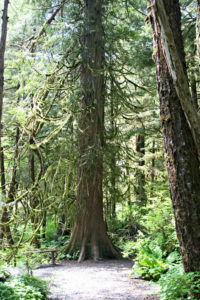
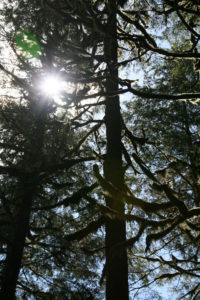
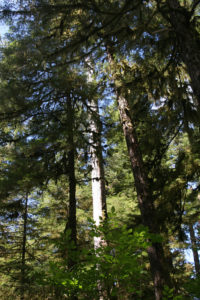
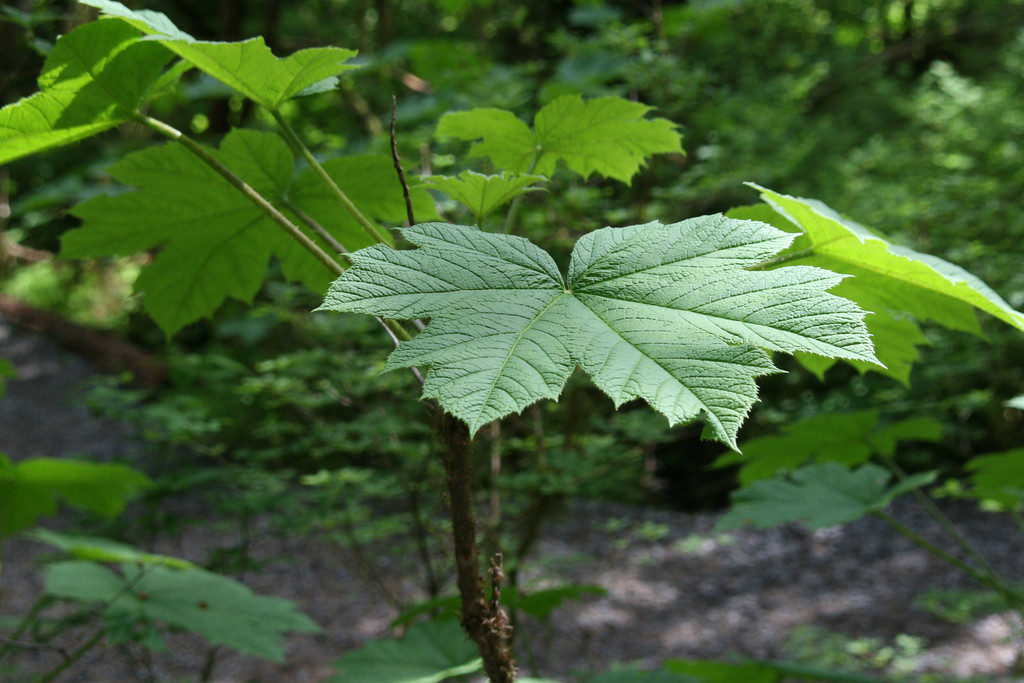
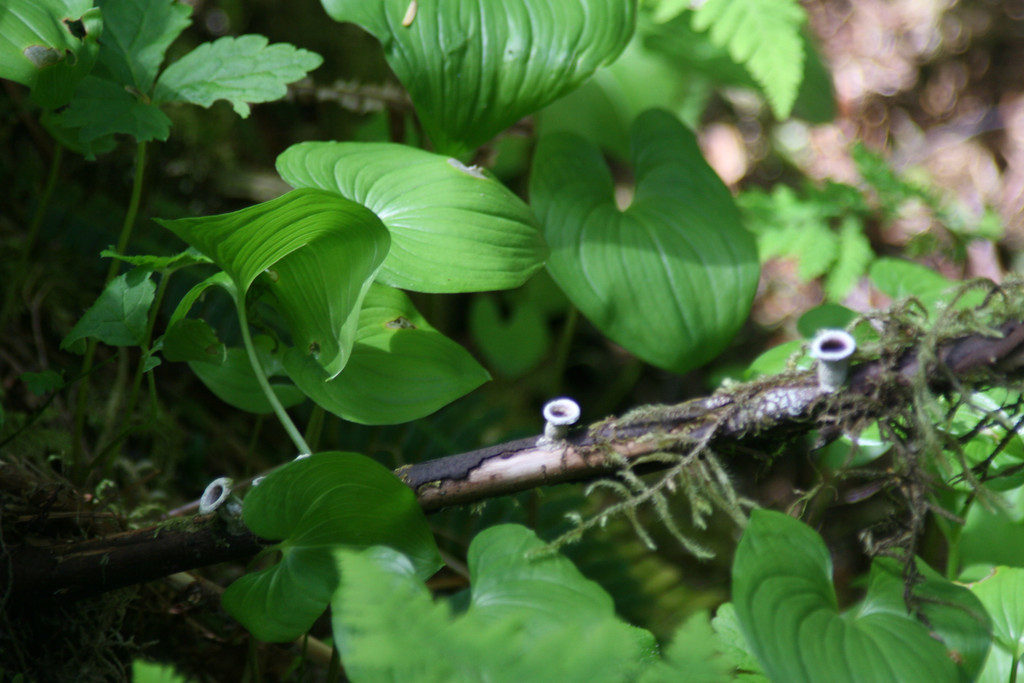
After the nature walk, we walked to the Wildlife Sanctuary where we saw reindeer, eagles and owls.
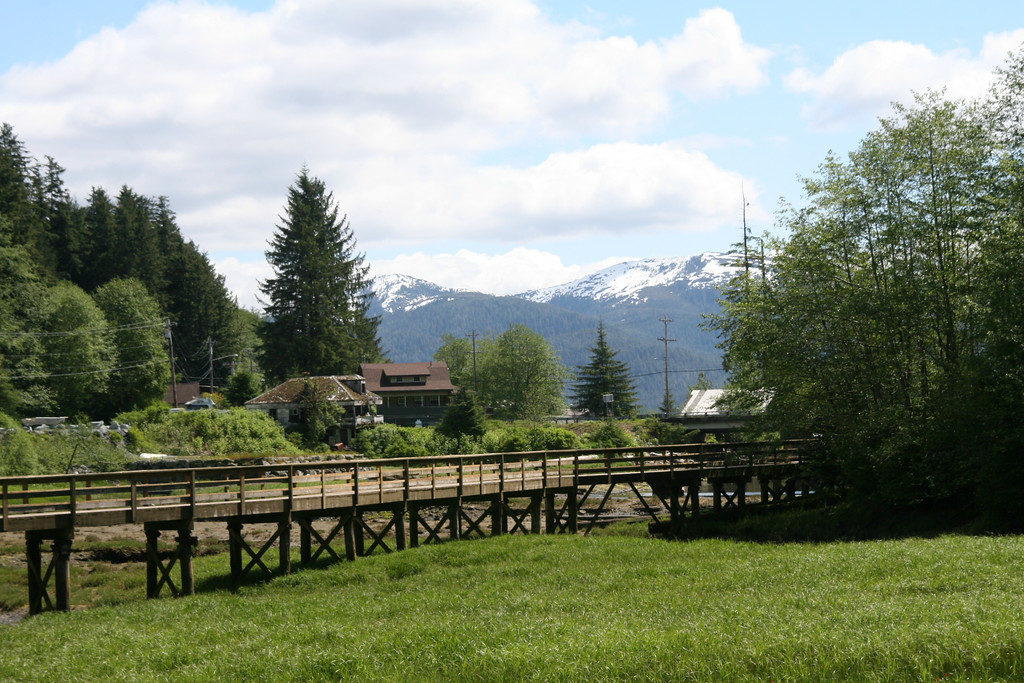
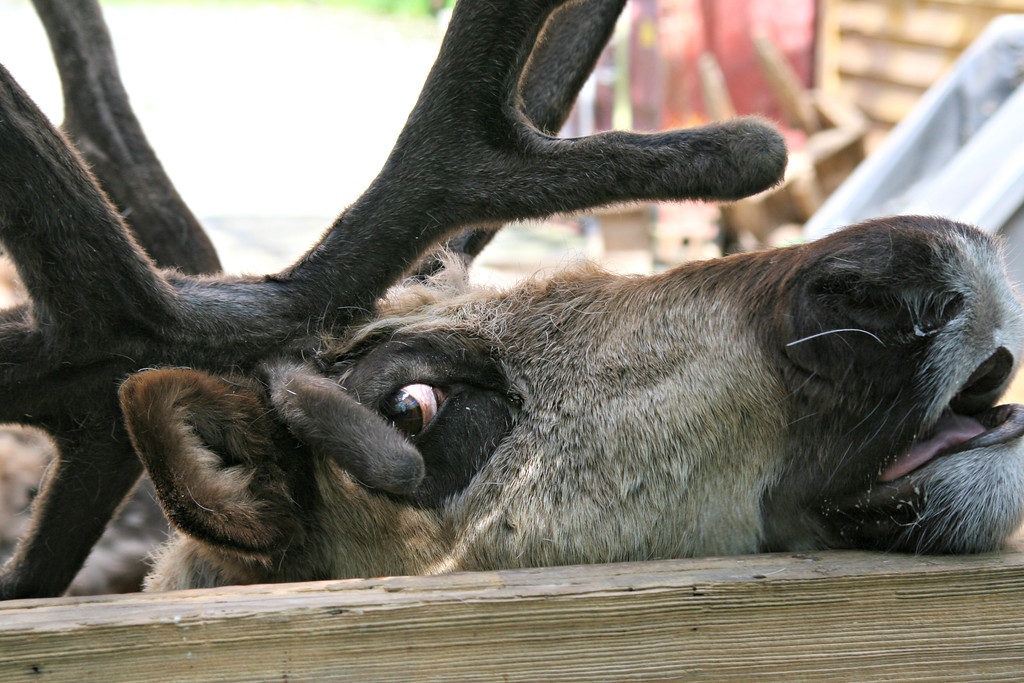

We also watched a man carving a totem pole. Alaska totem poles are usually carved from cedar which is a rot-resistant wood. Totem poles are not objects of worship – rather, the characters on the totem poles tell family or cultural stories. The gentleman carving the totem pole showed us the sketch from which he was working and some of the tools he used. When he has finished the carving, his wife paints any portions of the totem pole that will have color. After our visit here, we went to the George Inlet Lodge where we enjoyed an “all you can eat” crab feast.

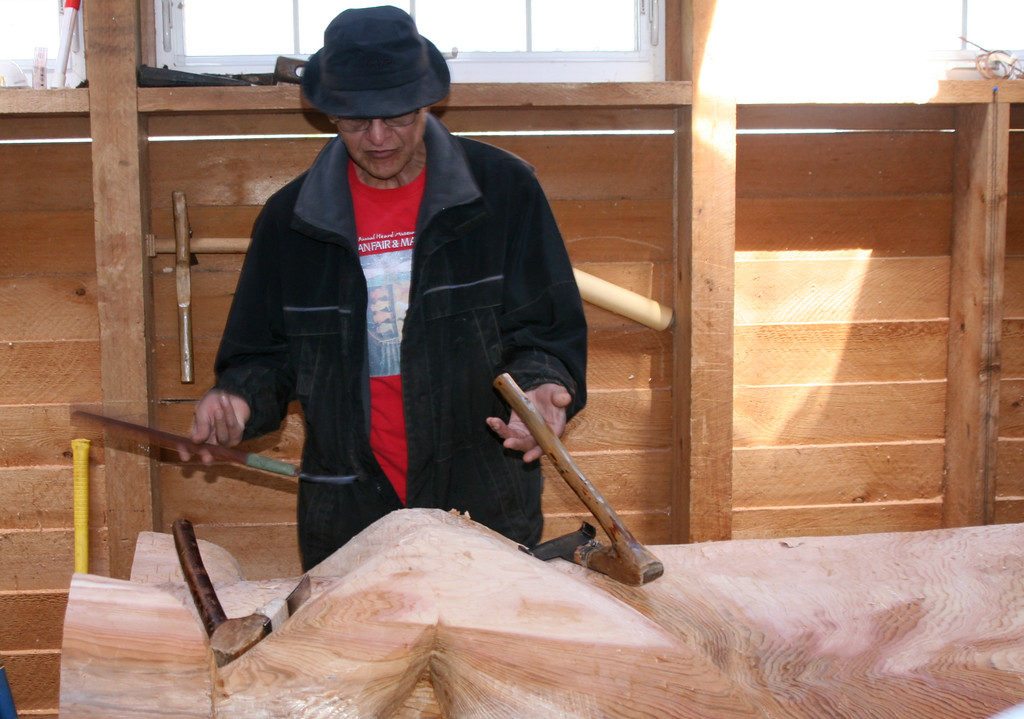
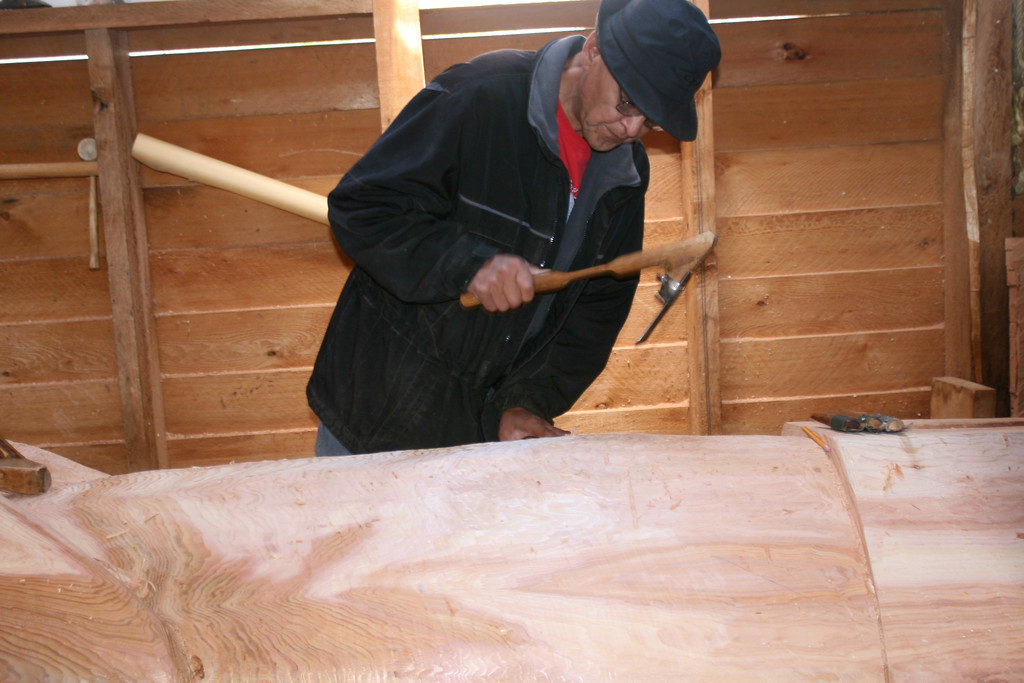

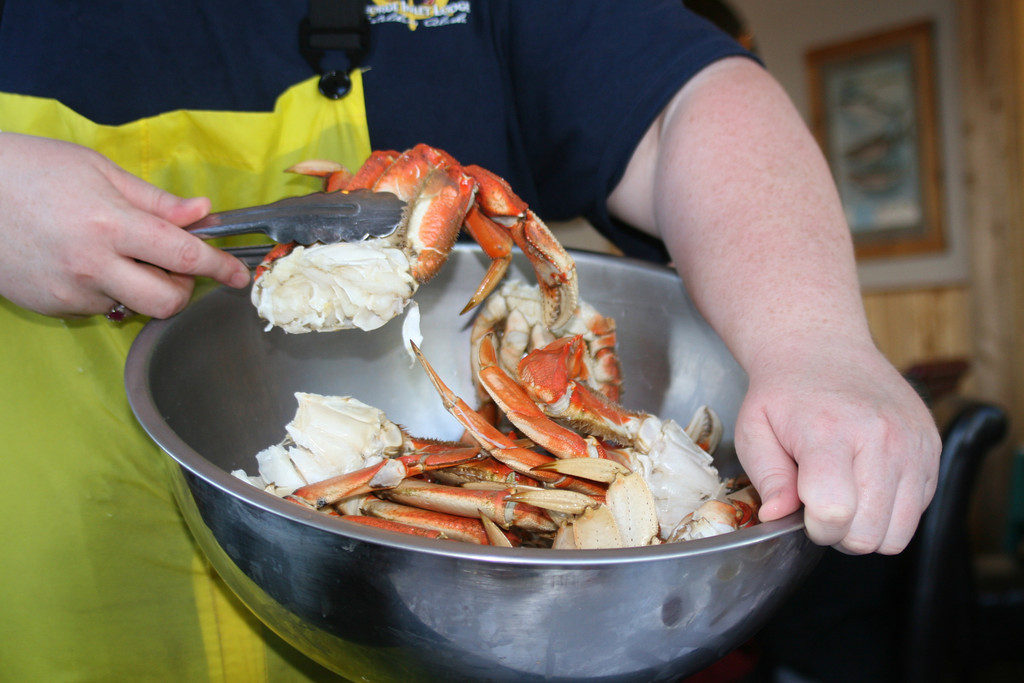
We then returned to Ketchikan. Before reboarding the ship, we walked around the town. They have lots of souvenirs shops so we did some shopping. We also looked at the many totem poles in the downtown area. Ketchikan has one of the highest concentrations of standing totem poles.
Many of the totem poles we saw had a description posted. After Ketchikan’s welcome sign is a picture of the Chief Kyan Totem Pole. This one is a replica – the original dated back to the early 1900’s. The top figure is a crane, the middle is a thunderbird and the bottom one is a brown bear. Chief George Kyan’s crest is a brown bear.
The next totem pole is named Raven Stealing the Sun Totem Pole. The figures on this totem pole are the raven at the very top, followed by the sun, then the chief’s daughter, then a baby and then the chief (not all are visible in my picture). The story tells of a raven who wanted the heavenly bodies. He disguised himself as the chief’s grandson and convinced the chief to give him boxes containing the heavenly bodies. The raven opened the boxes which brought the sun, moon and stars to earth.
The last two pictures are of the Chief Johnson (also known as Kajuk) Totem Pole. The original pole was commissioned by Chief Johnson in honor of the passing of his mother. It was raised in 1901 – the totem pole we see today is a replica of that totem pole and stands only a foot from where the original one stood. Kajuk, which is a mythical eagle, is at the very top of the pole (fourth picture). The space between Kajuk and the other figures symbolizes the importance of Kajuk. In the last picture, you will see the Raven and Fog Woman which are toward the bottom of this totem pole. It tells the story of the marriage of the Raven and Fog Woman. Fog Woman produces salmon and has them return to the creeks where they were born.
